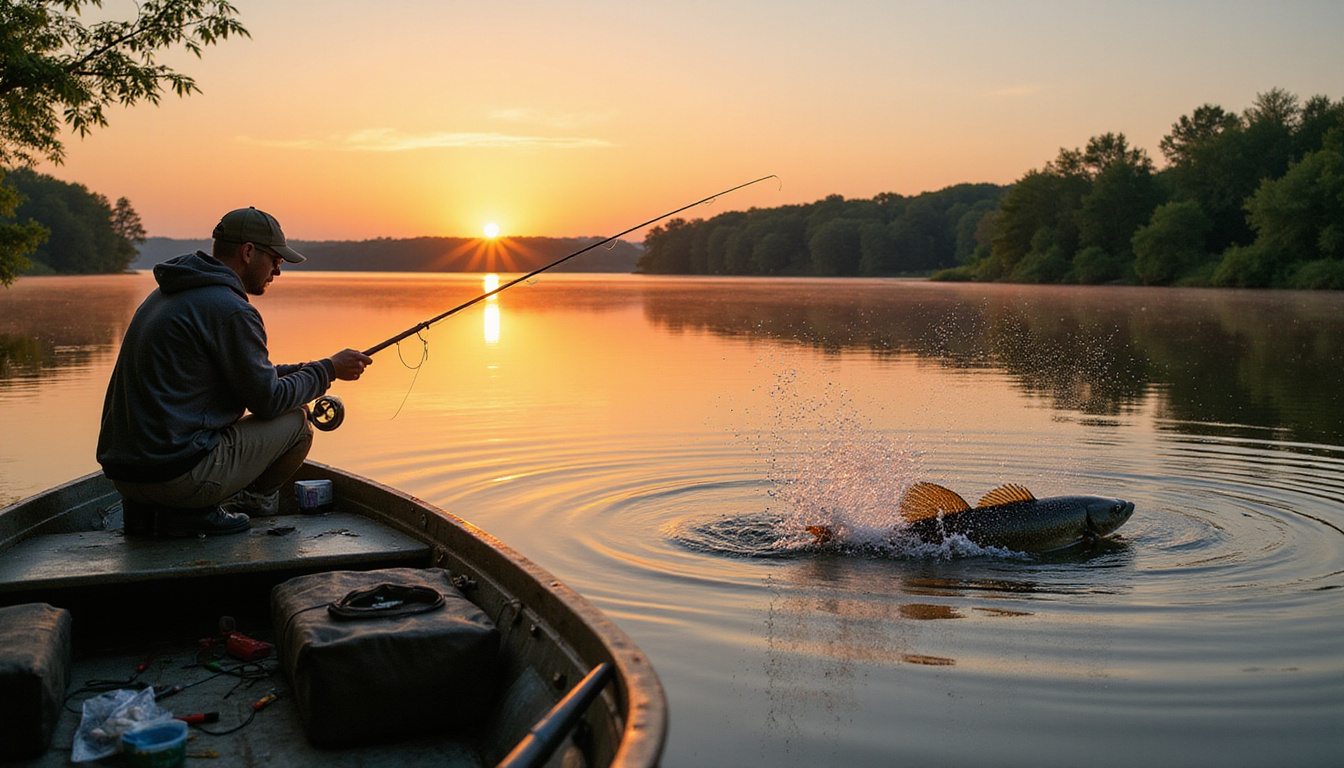
Ultimate Tips for Snagging Catfish at Night: Your Guide to Successful Night Fishing
On April 28, 2025 by Andy FordNight fishing for catfish can be one of the most thrilling and productive fishing experiences.
When the sun sets, catfish become more active, making it the perfect time for anglers to employ effective strategies.
In this guide, we’ll delve into the ultimate tips for snagging catfish at night, covering their behavior, essential gear, techniques, and safety measures that will enhance your fishing adventures.
Whether you’re a seasoned angler or a novice, understanding how to optimize your night fishing experience can lead to successful catches and unforgettable nights on the water.
Mastering Saltwater Fishing: A Complete Guide to Choosing the Right Fishing Line
 Mastering Saltwater Fishing: A Complete Guide to Choosing the Right Fishing Line
Mastering Saltwater Fishing: A Complete Guide to Choosing the Right Fishing Line

Effective Techniques for Snagging Catfish
When it comes to catfishing, especially at night, having the right strategies can make all the difference.
Here are some effective tips for snagging catfish at night that can enhance your fishing experience.
First, consider the location; catfish are typically found in deeper waters near structures like fallen trees, rocks, or under docks, where they seek shelter.
Using a good-quality flashlight to illuminate your fishing area can attract insects, drawing catfish closer to the surface.
Additionally, using live bait, such as worms or minnows, can significantly increase your chances, as these attract catfish with their movements.
It’s also beneficial to fish during the hours just after sunset, as catfish are more active and likely to feed.
Lastly, make sure to use heavier tackle that can withstand the fight from larger catfish, making your nighttime fishing trip both productive and exciting.
Following these tips for snagging catfish at night will not only improve your catch rates but also make for a more enjoyable fishing adventure.
Safety Tips for Night Fishing Adventures
Night fishing can be an exhilarating experience, especially when targeting species like catfish that are more active after dark.
To make the most of your nocturnal angling adventures while staying safe, here are essential safety tips for snagging catfish at night.
Firstly, always ensure you have proper lighting; a good headlamp or flashlight will help you navigate your fishing area and prepare your tackle without missing a beat.
Wearing a life jacket is crucial if you’re fishing from a boat, as water visibility is limited at night.
Additionally, let someone know your fishing location and expected return time to ensure someone is aware of your whereabouts.
Using glow-in-the-dark bait or bobbers can enhance your ability to see your rig and detect bites.
Lastly, staying alert and aware of your surroundings can help you avoid any mishaps with animals or other anglers.
By following these safety tips for snagging catfish at night, you’ll create a secure and enjoyable fishing experience that makes the most of the unique thrill of night fishing.
Frequently Asked Questions
What time of night is best for catfishing?
The best times to fish for catfish at night are usually between dusk and dawn, with peak feeding times often occurring in the hours just after sunset and before sunrise.
What gear do I need for night catfishing?
Essential gear includes a sturdy fishing rod, a reel with a smooth drag system, strong line (such as braided line), and tackle that includes heavy sinkers, hooks, and bait suitable for catfish.
What bait works best for catfish at night?
Nighttime catfish are attracted to strong-smelling baits such as stink bait, cut bait from fish, chicken liver, or nightcrawlers.
Experimenting with different baits can help you find what works best for your specific fishing location.
Are there any safety tips for night fishing?
Yes!
Always fish with a buddy, make sure you have proper lighting such as headlamps or lanterns, carry a first aid kit, and always be aware of your surroundings to avoid accidents.
How do catfish behavior differ at night compared to the day?
At night, catfish tend to become more active and move closer to the surface to feed, making them more accessible to anglers.
They are also less wary of predators, which can increase the chances of a successful catch.
100% Free Ai trading Bot Click here for yours!
Archives
Calendar
| S | M | T | W | T | F | S |
|---|---|---|---|---|---|---|
| 1 | 2 | |||||
| 3 | 4 | 5 | 6 | 7 | 8 | 9 |
| 10 | 11 | 12 | 13 | 14 | 15 | 16 |
| 17 | 18 | 19 | 20 | 21 | 22 | 23 |
| 24 | 25 | 26 | 27 | 28 | 29 | 30 |
| 31 | ||||||
